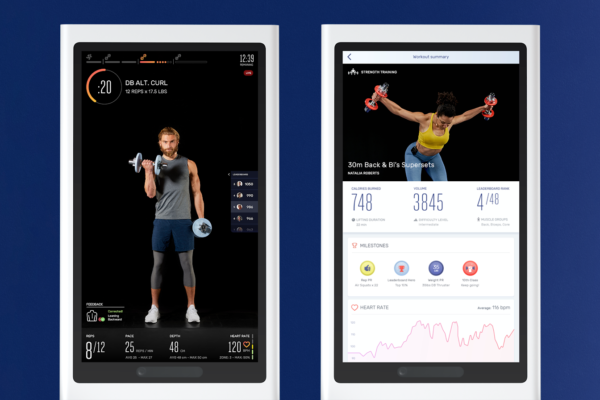If Peloton and the Mirror Had a Baby, It Would Be This New at-Home Fitness System
Tempo, which launches today, is a new at-home gym system that uses Artificial Intelligence to deliver real-time feedback during your workout. The machine employs a 3D light-pulse sensor that tracks users' motion 30 times every second, and uses the intel to count reps, track progress, and—yup—correct form.
"At-home fitness systems, including our direct competitors, have been stuck in the same rut since the days of VHS," says Moawia Eldeeb, Tempo's founder and CEO. "Brands often push classes and workouts led by a 'trainer' who can’t actually train. If you’re doing something dangerously wrong with your form, you’ll never know." That's where Tempo's first-of-its-kind tech comes in, which tells you when you're making a mistake so you can fix it right away in order to get the most out of your workout and avoid injury.
Classes can be taken live or on-demand, they're taught by real, human trainers on an interactive, 42-inch screens reminiscent of The Mirror. Tempo's device (which is free-standing, and not reflective) comes with a competition-grade set of 7.5 to 100-pound weights so that you aren't limited exclusively to bodyweight exercises, plus a mat, a heart rate monitor, and foam roller. Classes run the gamut, including HIIT, strength training, and mobility workouts, each of which is offered for a variety of skill levels and can be tailored based on your individual needs.

{{post.sponsorText}}
Because the equipment is constantly collecting data from your workouts, it allows you to track real, measurable progress over time. It knows how heavy the weights are that you're lifting, how many calories you've burned in a given workout, and how hard you've been working, and then uses that information to help you come up with a longterm fitness plan to get stronger.
In addition to competing with yourself, this data also allows you to compete with other Tempo users by way of a Peloton-style leaderboard. During live classes, your stats are compared in real-time, and if you opt for an on-demand session, you'll be scored against people who have already taken it.

What it was like when I tried Tempo
I had the chance to test the equipment last week, and was so impressed with the technology that my jaw was on the floor throughout my entire 25-minute "Quadzilla" workout. Before the workout began, I strapped on a heart-rate monitor stood on my mat while the machine's sensors calibrated to my body so that it could track my movements. Then, head trainer Melissa Boyd (of Equinox pedigree) appeared to lead me through an AMRAP lower-body workout.
Boyd demonstrated and explained each move in the series as she did it, which made following along in near-perfect form almost foolproof. When I did mess up my squats, a little figure appeared on the side of the screen to let me know that my knees were too far forward. During live classes, trainers can see the mistakes their students are making so that they can call out corrections, the same way they'd be able to in a real-life studio setting.
In addition to monitoring my form, the Tempo screen also displayed my heart rate, the number of reps I'd completed, and my rank on the leader board (which, for what it's worth, was wildly motivating). After I completed the workout, the data was saved to my profile so that I could refer back to it in the future, and so that the machine could use it to inform my next session.
Tempo is available for pre-order today, and retails for $1,995 plus a $39 monthly content subscription.
For a low-fi (but totally free!) take on at-home workouts, try this hurts-so-good [Solidcore] series care of our FebruaryTrainer of the Month. And we love digital fitness as much as you do, but here's why it will never totally kill the boutique boom.
Loading More Posts...